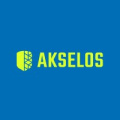Summary
Cut through the green tape
We don't push agendas. At Net Zero Compare, we cut through the hype and fear to deliver the straightforward facts you need for making informed decisions on green products and services. Whether motivated by compliance, customer demands, or a real passion for the environment, you’re welcome here. We provide reliable information—why you seek it is not our concern.
Details
Deep dive
- Main Features
- Grid Planning
- Grid Operation
- Asset Management
- Advanced Analytics
- Integration and Scalability
- User Interface and Experience
- Target Users
- Pricing
- Case Studies
- Case Study 1: Grid Optimization for Renewable Integration
- Case Study 2: Grid Resilience and Asset Management
- Case Study 3: Real-time Grid Monitoring and Control
- Market Outlook
Main Features
Grid Planning
Scenario Simulation: Plan and simulate future grid scenarios considering load growth and renewable energy integration.
Capacity Planning: Optimize infrastructure investments by accurately forecasting capacity needs.
Integration of Renewables: Facilitate the integration of renewable energy sources into the grid.
Grid Operation
Real-time Monitoring: Monitor grid performance metrics such as voltage levels, load distribution, and equipment status in real-time.
Dynamic Grid Management: Respond to changing grid conditions and ensure grid stability.
Optimization Algorithms: Implement algorithms to optimize grid operations and reduce congestion.
Asset Management
Lifecycle Management: Manage the entire lifecycle of grid assets, from installation to decommissioning.
Predictive Maintenance: Use predictive analytics to schedule maintenance and prevent failures.
Condition Monitoring: Continuously monitor the condition of grid assets to ensure optimal performance.
Advanced Analytics
AI-Driven Insights: Leverage artificial intelligence to analyze grid data and derive actionable insights.
Predictive Analytics: Predict grid behavior and identify optimization opportunities.
Decision Support: Provide recommendations for proactive measures based on data analysis.
Integration and Scalability
Seamless Integration: Integrate with existing IT systems and grid infrastructure.
Scalable Architecture: Scale the platform to accommodate various deployment sizes, from small utilities to large distribution networks.
User Interface and Experience
Intuitive Interface: User-friendly interface designed for ease of use by grid operators and planners.
Customizable Dashboards: Create customizable dashboards to visualize key grid metrics and performance indicators.
Target Users
Distribution System Operators (DSOs): Organizations responsible for operating, maintaining, and developing the distribution grid infrastructure. They use the Intelligent Grid Platform for planning grid expansions, optimizing operations, and managing grid assets efficiently.
Transmission System Operators (TSOs): Entities that operate the high-voltage transmission networks. They leverage the platform for managing grid stability, integrating large-scale renewable energy sources, and planning infrastructure investments.
Energy Utilities: Companies that generate, transmit, and distribute electricity. They utilize the platform to enhance overall grid efficiency, reduce operational costs, and ensure reliable service delivery to customers.
Renewable Energy Project Developers: Developers involved in the planning and deployment of renewable energy projects such as wind, solar, and hydro. They use the platform to assess the impact of new projects on the grid and to facilitate the integration of renewable energy sources.
Regulatory Agencies: Government bodies responsible for regulating and overseeing the energy sector. They may use the platform to ensure compliance with regulations, monitor grid performance, and support policy-making.
Consulting Firms: Companies providing consulting services to the energy sector. They leverage the platform to provide insights and recommendations for grid optimization, planning, and renewable energy integration.
Research Institutions: Academic and research organizations focused on studying and improving grid technologies and energy systems. They use the platform for research purposes, modeling, and simulation studies.
Large Industrial Enterprises: Industries with significant energy consumption and private energy distribution networks. They utilize the platform to manage their own energy infrastructure, ensure reliability, and optimize energy usage.
Pricing
Envelio does not publicly disclose specific pricing or subscription plans for their Intelligent Grid Platform. Interested parties should contact Envelio to request a demo and get a detailed quote tailored to their specific requirements.
Case Studies
Case Study 1: Grid Optimization for Renewable Integration
Client: Renewable Energy Developer, Germany
Year: 2019
Challenge:
A renewable energy developer needed to integrate a large-scale wind farm into the local distribution grid without compromising grid stability or reliability.
Solution:
Envelio's Integrated Grid Platform was deployed to model and simulate various scenarios for integrating the wind farm. The platform's grid planning module was used to assess grid capacity, optimize voltage levels, and manage potential grid congestion points.
Outcome:
Integrated the wind farm into the grid while maintaining grid stability and reliability.
Optimized the use of existing infrastructure, reducing the need for costly grid upgrades.
Enhanced the capacity for renewable energy integration, contributing to Germany's renewable energy targets.
Case Study 2: Grid Resilience and Asset Management
Client: Distribution System Operator (DSO), Netherlands
Year: 2020
Challenge:
The DSO faced challenges in managing aging grid infrastructure and ensuring grid resilience amid increasing demand and weather-related disruptions.
Solution:
Envelio's Intelligent Grid Platform was implemented to monitor and manage grid assets effectively. The asset management module enabled predictive maintenance scheduling based on real-time data and condition monitoring.
Outcome:
Reduced downtime and operational disruptions through proactive maintenance.
Enhanced grid resilience to weather-related events and increased reliability for customers.
Optimized asset lifecycle management, extending the lifespan of critical grid infrastructure.
Case Study 3: Real-time Grid Monitoring and Control
Client: Transmission System Operator (TSO), Spain
Year: 2021
Challenge:
The TSO needed to improve real-time monitoring and control capabilities across its transmission network to ensure grid stability and manage fluctuations in renewable energy generation.
Solution:
Envelio's platform was deployed for real-time grid monitoring and control. The platform's operational module provided visibility into grid performance metrics and enabled automated responses to grid disturbances.
Outcome:
Improved grid stability and responsiveness to fluctuations in renewable energy generation.
Enhanced situational awareness and decision-making through real-time data analytics.
Reduced operational costs and optimized grid operation efficiency.
Market Outlook
The global market for smart grid management software is substantial and growing rapidly. In 2023, the smart grid market size was valued at approximately $44.2 billion and projected to reach $104.7 billion in 2032 (source: Custom Market Insights). The growth of this market is driven by several factors, including the increasing need to modernize aging electric grid infrastructures, the integration of renewable energy sources, government policies promoting energy efficiency, and advancements in digital technologies like the Internet of Things (IoT) and artificial intelligence (AI). Other major players in this market include Siemens AG, General Electric Company, IBM, Oracle, and Cisco Systems.
In terms of regional market share, North America currently leads the smart grid market due to its strong regulatory framework and significant investments in grid modernization. The Asia-Pacific region is also experiencing rapid growth, driven by urbanization, industrialization, and government initiatives to enhance energy efficiency and integrate renewable energy sources.






